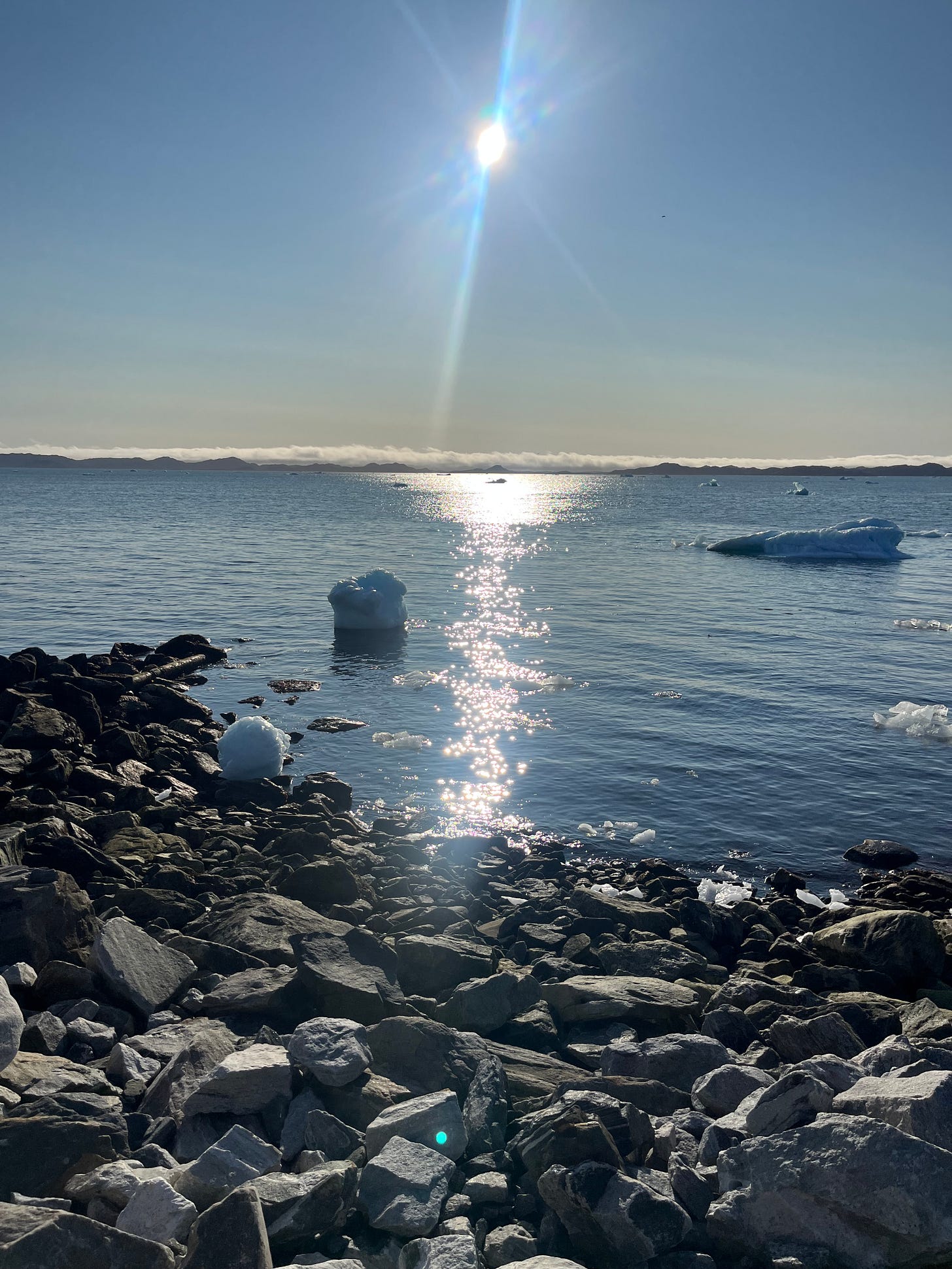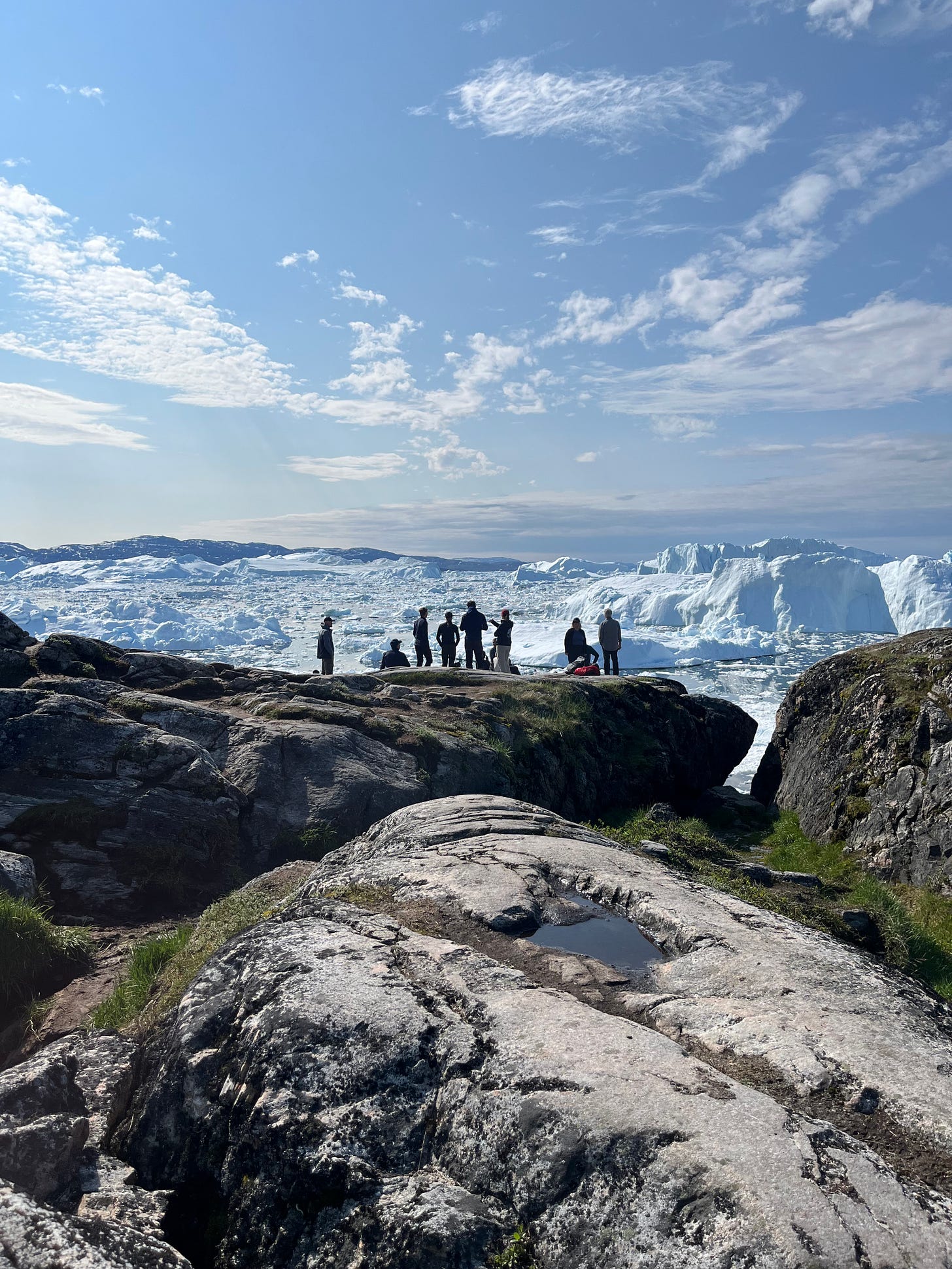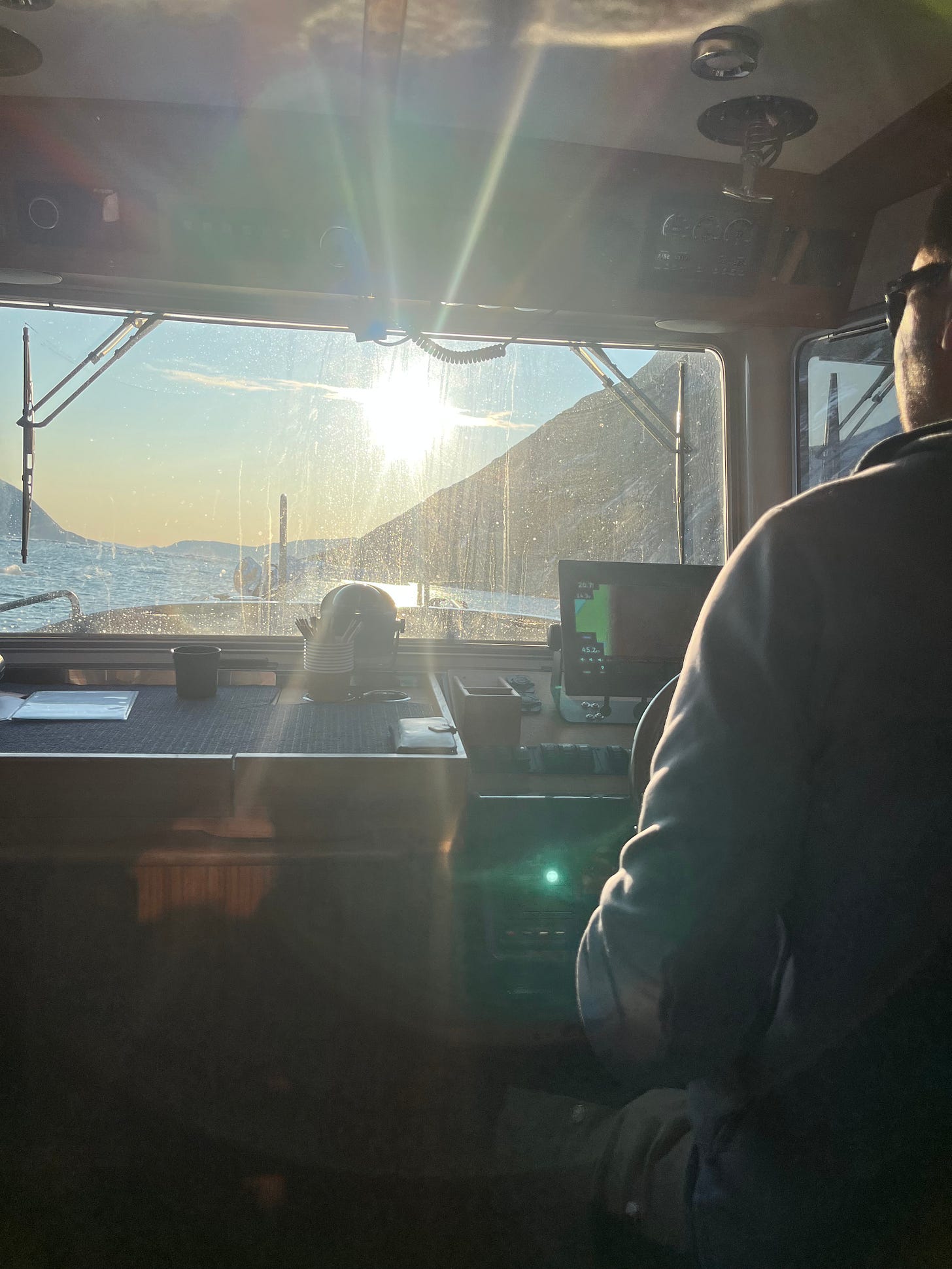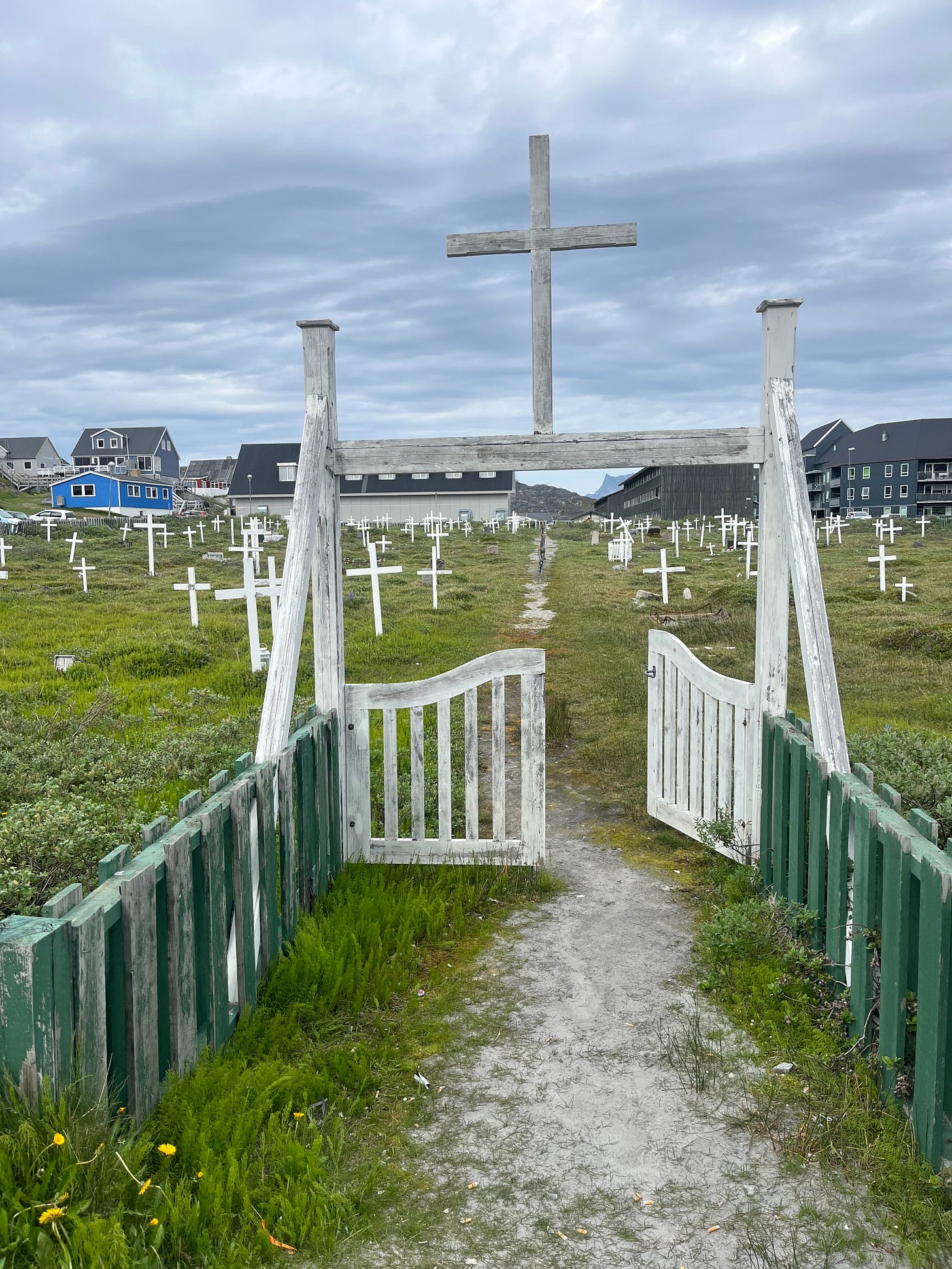Summers in Greenland Are for Grave Digging
Midnight sun, melting snow, and a practical approach to mortality. Welcome to summer in Greenland.
When early June rolls in, so does the thaw. Temperatures inch above freezing and the snow begins to melt. With it emerges what I can only describe as Arctic clutter - rusted machinery, rotting and broken wooden palettes, and mysterious debris that winter kindly concealed beneath its pristine blanket. I’ve realized I prefer winter - perhaps because I’m an unusually tidy person, and summer’s messiness can feel like an eyesore.
Nuuk, Greenland - view from old colonial harbor. A mix of summer sun and the floating icebergs that calve from the glaciers and float down from the north.
Summer also brings another big change - tourism. Over 200 cruise ships descend on Greenland in under 100 days. It’s an impressive logistical feat - and a paradox. On the one hand, it’s a welcome economic boost. On the other, it places significant strain on resources, infrastructure, and the environment, especially as it coincides with the peak of fishing season, which accounts for over 90% of Greenland’s GDP.
Ilulissat Ice Fjord - a UNESCO World Heritage Site - is a common tourism destination as it is where the world’s icebergs calve and are send into the sea. It is said the iceberg that sank the Titantic was from Ilulissat.
To meet the surge in demand, there’s an influx of workers - entrepreneurial and unskilled laborers from the Philippines, Thailand, and China. Seasonal guides and hospitality staff descend from across the Nordics. Quiet Greenland, suddenly, isn’t so quiet.
“Midnight sun” at 11pm in the Nuuk fjords, after a slow dinner of fish we stopped and caught on the way to the restaurant that will prepare your catch for your dinner, Qooqqut Nuan.
And yes - this is the season of midnight sun, 24 hours of daylight, which sounds disorienting, but for locals, it’s pure liberation. You can leave work and head straight out on your boat until bedtime. It’s a time of maximum life - fishing, barbecues, and simply being outside, with no need to race the sunset. In Nuuk, there are more boats than cars, and overlooking the harbor, I witness a the daily 3:30 p.m. boat traffic rush with families, fishermen, friends, all setting off like clockwork into the fjord.
Out on a boat on Nuuk fjord and navigating into the blinding sun for an evening out on the water.
And then there’s what I now think of as sunshine flu. The office mysteriously empties on the most beautiful days - people "off sick" in perfect weather days, yet never on the grey and rainy ones. Coincidence? Perhaps. But unlikely.
Still, the most quietly remarkable sign that summer has arrived - grave digging.
With the ground finally thawed, this is the only time of year when it’s possible to dig graves. Since death does not schedule itself neatly between June and August, each town must estimate how many will be needed in advance. In smaller settlements, it can be as personal as looking around and acknowledging that auntie Nivi isn’t looking so sprightly these days. In Nuuk, it’s more of a numbers game based on historical data.
Greenland graveyard - the custom is to be buried, no other methods such as cremation are used.
There’s something poetic, and a bit unsettling, about that. I wonder…is it comforting to be seen and accounted for? Or unnerving to know someone’s already preparing your final resting place?
As for me, I tend to slip away during summer. I prefer Greenland in its winter cloak - silent, soft, and a little more surreal.
Because while summer may be loud, busy, and endlessly bright, it’s in the hush of winter where Greenland’s magic really whispers.







